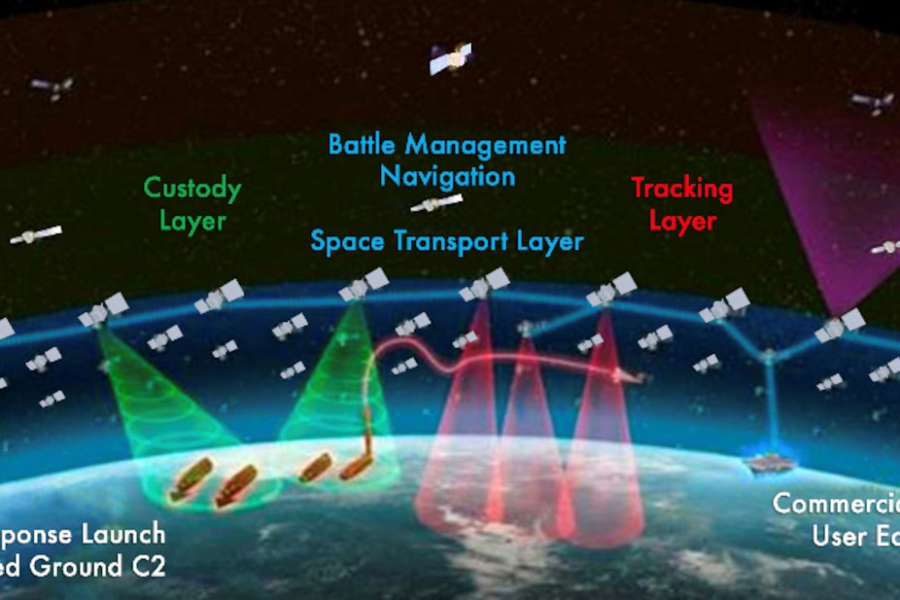The Department of the Air Force’s new space acquisition chief said he will seek to expand the types of orbits used by the Space Force’s future satellite constellations in the interest of improving their resilience. At the same time, he would aim to acquire smaller satellites that can be produced more quickly.
Frank Calvelli worked for 30 years at the National Reconnaissance Office, including eight years as its principal deputy director, before his confirmation to the long-vacant DAF position of assistant secretary of the Air Force for space acquisition and integration in April.
“You get the sense that we really, really need to do something with our architecture,” Calvelli said at a media roundtable discussion June 28.
“I think the day without space is a horrible day for the nation, right?” he said, reflecting on the threats posed by Russia and China in space. “The nation depends on space,” he said.
A week prior, the new space acquisition chief spoke at an AFA Mitchell Institute for Aerospace Studies webinar, describing how he would apply his NRO experiences to program management to the Space Force.
At the Pentagon, Calvelli commended the work of the Space Development Agency for proposing its constellation of proliferated low Earth orbit (LEO) satellites for added resiliency.
“For too long, the DOD side of the house has just predominantly worried about [geosynchronous] orbits … I think you’ve got to shake things up,” he said. “From a resiliency perspective, I think we get it by proliferating the architecture more.”
“I think orbit diversification, getting into LEO, getting into [medium Earth orbit], getting into elliptical orbits, like a polar orbit or a halo orbit—even trying some crazy things on other orbits that are available—I think is really going to add a lot of resiliency,” he said.
Achieving space architecture resiliency will also require faster production of satellites. Calvelli believes that can be done by producing smaller satellites.
“We want to build as fast as we can and launch them as fast as we can,” Calvelli said in response to a question from Air Force Magazine. “To go a little bit faster, you got to build a smaller-sized spacecraft.”
Calvelli learned at the NRO that building large systems takes years, from sourcing the materials to developing the physics and constructing the system. In turn, those large systems are designed to last more than five years.
Small spacecraft can be constructed faster and used for shorter periods of time.
“You could actually just do a two-year design life or a three-year design life and use more readily available components,” he said. “Launch has gotten so inexpensive that it’s cheaper to replenish than it is to keep building.”

